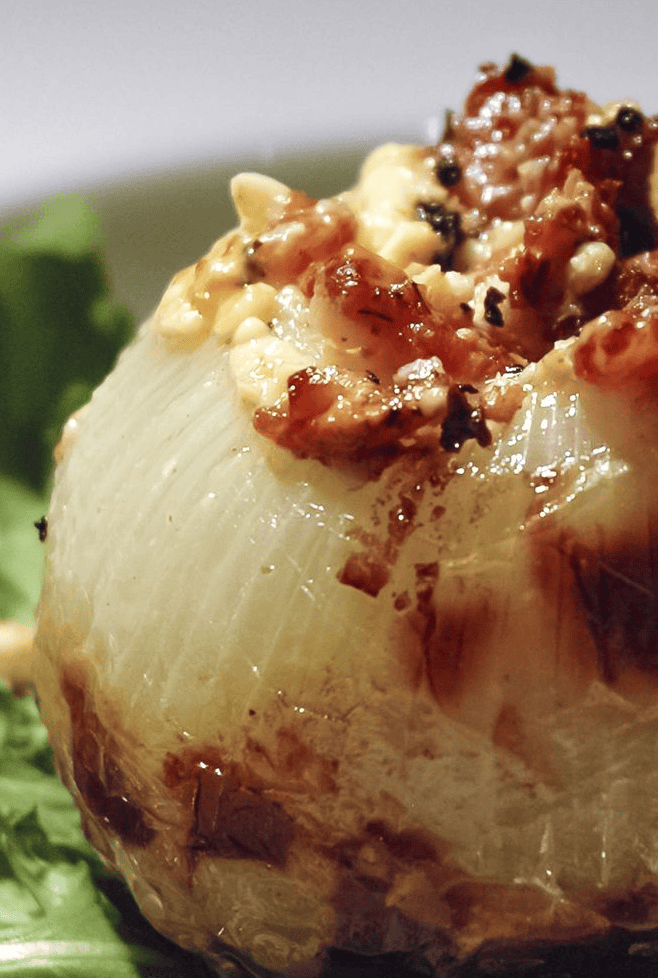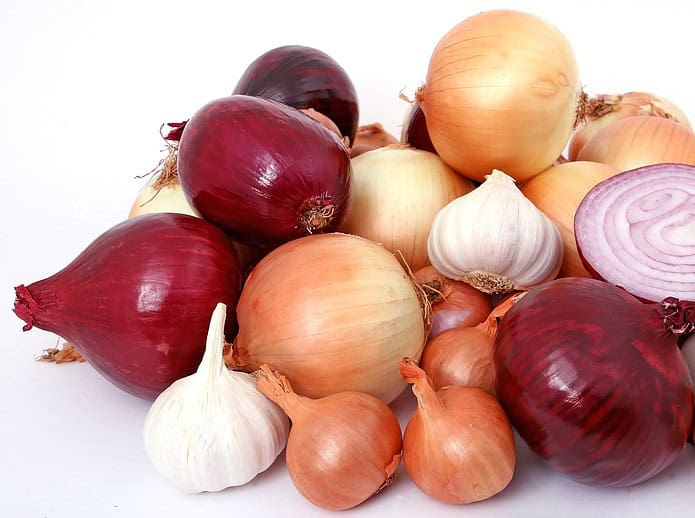Most all recipes need an onion. They are the foundation, or finishing touch, to any meal.
Onions are totally underrated! They are the second-most produced veggie in the world, surpassed only by tomatoes, which are actually fruits! Cooked, raw, crunchy, and soft, onions are so versatile. What would we do without them? They add so much flavor and texture to any dish. Whether they’re caramelized to a rich sweetness or left crisp and fresh in a salad, the modest onion makes everything delicious.
They’re used just about everywhere around the world. That’s because one of their unusual qualities is that they can grow anywhere—in arid, tropical, or even arctic climes.
You may look upon onions as being “common,” but “remarkable” is a better description. This enduring veggie is an absolute necessity in the kitchen. Even though its fragrance and tear-inducing effects might frustrate you, it’s so flavorful it enhances almost every dish.
When shopping for onions, it really matters which one you select at the grocery store. If you choose the wrong one, your recipe could be ruined. Like using a red onion with egg dishes — the onion’s natural chemicals can make the eggs turn a blue-grey color. Not very appetizing.
The best type of onion to always have on hand is the yellow onion. Yellow onions account for most of the country’s crop, with red a very distant second and white following way behind. Yellow onions are your best friend and are ideal for caramelizing or as the base for most dishes, like soups and pasta sauces.
White onions have a brighter, crisper, and firmer texture than yellow onions. This is why they’re best used thinly sliced in salads, chopped in pico de gallo, or other raw dishes. Their biggest drawback is that they don’t last as long in storage.
Red onions are particularly good raw in many of the same places as their white cousins. Red onions work well in salads and guacamole or on a juicy burger because they’re so colorful.
Benefits
Chinese medicine practitioners recommend raw onions for weakened immune systems, and there are scientific and nutritional data to back up this practice. Onions are rich in Vitamin C and contain potent plant compounds that can promote digestive health, immune function and heart health. For the majority of people, onions make a useful addition to a balanced diet. Onions also help regulate blood sugar levels and have anti-diabetic properties.
Onions can help with collagen production and iron absorption. It’s also a powerful antioxidant that can help protect your cells from unstable, damaging molecules called free radicals.
Folate is found in onions and can help to reduce symptoms of depression, aid in sleep, and improve mood. Folate prevents homocysteine from building up, which can prevent nutrients from getting to the brain.
Substitutes
Some people cannot eat onions or dislike their taste and texture. If you have to use a substitute for onions, leeks are highly recommended. They also keep in the fridge for a long time. Leeks become creamy and sweet when cooked, and with a hint of garlic, these long, green and white stalks are a sophisticated substitution for onions.
Fennel looks similar to an onion but with hints of a rich anise flavor, especially when raw. Another substitute is the spice asafoetida, which is a dried gum taken from the taproot of a plant related to fennel.

Wintertime Onion Trio Recipe
Use red, white and yellow onions to make a pretty herb-and-cheese-stuffed vegetarian main dish. For the vegan version, omit the cheese. The onions can be hollowed out and stored in the refrigerator for up to two days. The stuffed, baked onions can be reheated in a 400-degree oven for 35 minutes; tent loosely with foil for the first 25 minutes, then remove the foil for the last 10.
Ingredients
3 large onions (1 red, 1 white, 1 yellow), about 12 ounces each
5 ounces stale bread, cut into 1-inch slices
4 cups vegetable broth, divided (2 cups heated to a boil)
2 tablespoons extra-virgin olive oil
1/2 teaspoon sea salt
2 cloves garlic, smashed and finely chopped
1/4 cup chopped fresh herbs (parsley, marjoram, thyme, celery leaves, or oregano)
2 ounces fontina cheese, grated
1 ounce Grana Padano or Parmigiano-Reggiano cheese, grated
1/4 teaspoon cracked black pepper
Directions
Preheat the oven to 375 degrees.
Cut off the top of each onion and a small slice from the bottom so the onions stand upright. Scoop out the inside of each onion, leaving a shell about two layers thick.
Chop enough of the onion pulp to equal 1 1/2 cups.
Soak the bread in the boiling broth and let it stand for 10 minutes.
Heat a large skillet over medium-low heat. Add 2 teaspoons of olive oil, the chopped onion, and the salt. Cook for 7 to 8 minutes, until translucent. Stir in the garlic and cook for 3 minutes. Add the herbs and cook for 1 minute.
Squeeze the bread gently with your hands so it is moist but not dripping. Mix the bread with the onion mixture, cheeses, and black pepper. Spoon the stuffing into each onion cavity, mounding it slightly.
Arrange the onions in a deep baking dish and drizzle the tops with the remaining olive oil. Pour the remaining 2 cups of broth into the bottom of the baking dish and cover with foil.
Bake for 45 minutes. Remove the foil, baste the tops of the onions with the liquid in the baking dish, and continue baking for another 30 minutes, until the tops are browned.
Serve warm.

